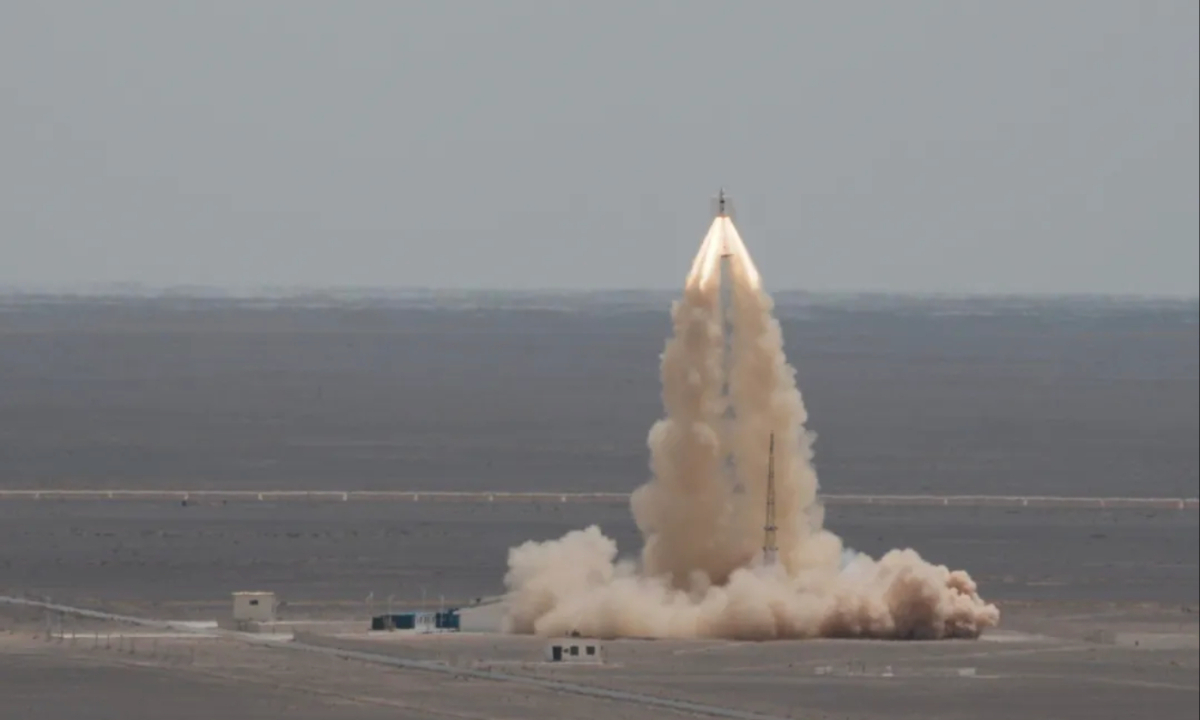
Developers elaborate on innovation of China’s new-gen crewed spacecraft Mengzhou
How did your country report this? Share your view in the comments.
Diverging Reports Breakdown
Developers elaborate on innovation of China’s new-gen crewed spacecraft Mengzhou
China successfully conducted a zero-altitude escape test for the manned spacecraft Mengzhou (Dream Vessel) at the Jiuquan Satellite Launch Center in Northwest China’s Gansu Province on June 17, 2025.Developers of Mengzhou further elaborated on the innovation of the spacecraft in comparison with the country’s Shenzhou system. The Mengzhou return capsule jettisons its heat shield before landing, then inflates buffer airbags, which cushion the landing and reduce the impact on the capsule. The escape test is powered by the escape tower mounted atop the spacecraft, a design similar to that seen on the active Long March-2F manned rocket. To meet the conditions for safe and reliable parachute deployment, the escape towers must meet strict performance and load standards and undergo verification.
Developers of Mengzhou – China’s new-generation manned spacecraft that just successfully underwent an escape flight test at zero altitude on Tuesday – further elaborated Wednesday on the innovation of the spacecraft in comparison with the country’s Shenzhou system, which included deploying parachutes and airbags to reduce the landing impact on the return capsule.Yu Kang of the state-owned space giant China Aerospace Science and Technology Corporation (CASC,) the contractor of the Mengzhou spacecraft development, revealed that the Mengzhou manned spacecraft and the current Shenzhou manned spacecraft operate differently during the return and landing phase.The Shenzhou spacecraft jettisons its heat shield in the air, exposing the retrorocket, which ignites about one meter above the ground to further reduce landing speed. In contrast, Mengzhou spacecraft adopts a different approach. The Mengzhou return capsule jettisons its heat shield before landing, then inflates buffer airbags, Yu said.Yu added that the airbags are fully inflated before touchdown, and through the combined effect of parachutes and buffer airbags, they cushion the landing and reduce the impact on the capsule.Pang Zhihao, a space technology expert who worked for decades at the China Academy of Space Technology, explained that instead of using buffer engines for deceleration before landing, six inflatable airbags are used to help the capsule achieve a “soft landing.”Pang said the advantages include reusability, adaptability to more complex terrain, buoyancy in water landings, the ability to cushion horizontal velocity, and improved landing stability.According to the developers, unlike the Shenzhou spacecraft, the Mengzhou manned spacecraft carries a dual mission of lunar exploration and near-Earth space station operations. These two types of missions differ significantly in terms of launch procedures and operational timelines, creating new challenges to the compatibility of the escape system.Additionally, the Mengzhou spacecraft is launched from a coastal site, where complex weather conditions and dense surrounding infrastructure demand greater escape acceleration, adaptability, and active control over landing sites, per the CASC.Conducted at the Jiuquan Satellite Launch Center in Northwest China, the escape flight test on the new-generation manned spacecraft Mengzhou at zero altitude marks China’s second zero-altitude escape flight test, 27 years after such a test by the Shenzhou manned spacecraft in 1998.The escape system is a specialized feature in manned spacecraft, primarily designed to separate the return capsule carrying astronauts to a safe distance in emergency situations, followed by recovery procedures that ensure a safe landing, Yu explained.The zero-altitude escape test is powered by the escape tower mounted atop the spacecraft, a design similar to that seen on the active Long March-2F manned rocket. To meet the conditions for safe and reliable parachute deployment after a zero-altitude escape, the escape tower must meet strict performance and load standards and undergo verification.Testing the system at zero altitude involves tighter timing, a lower escape altitude, and stricter technical requirements. Choosing this mode for the zero-altitude escape test is also a thorough validation of the escape system, Yu said.According to CASC, the Mengzhou spacecraft is also scheduled to conduct a maximum dynamic pressure escape flight test later this year, as part of the China Manned Space Program.
Source: https://www.globaltimes.cn/page/202506/1336419.shtml
